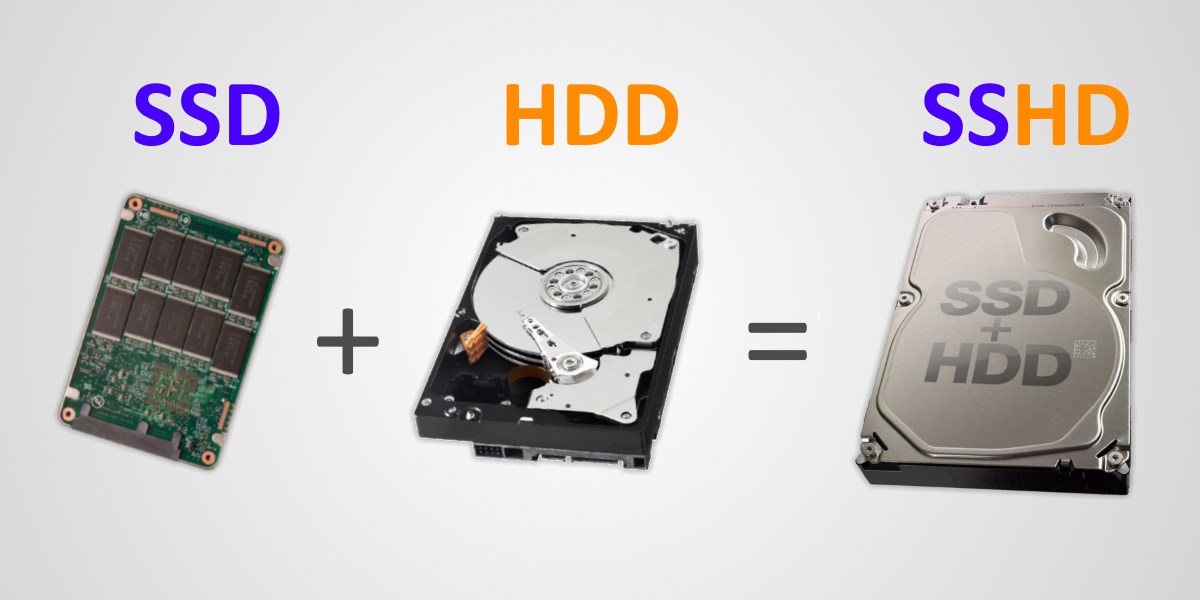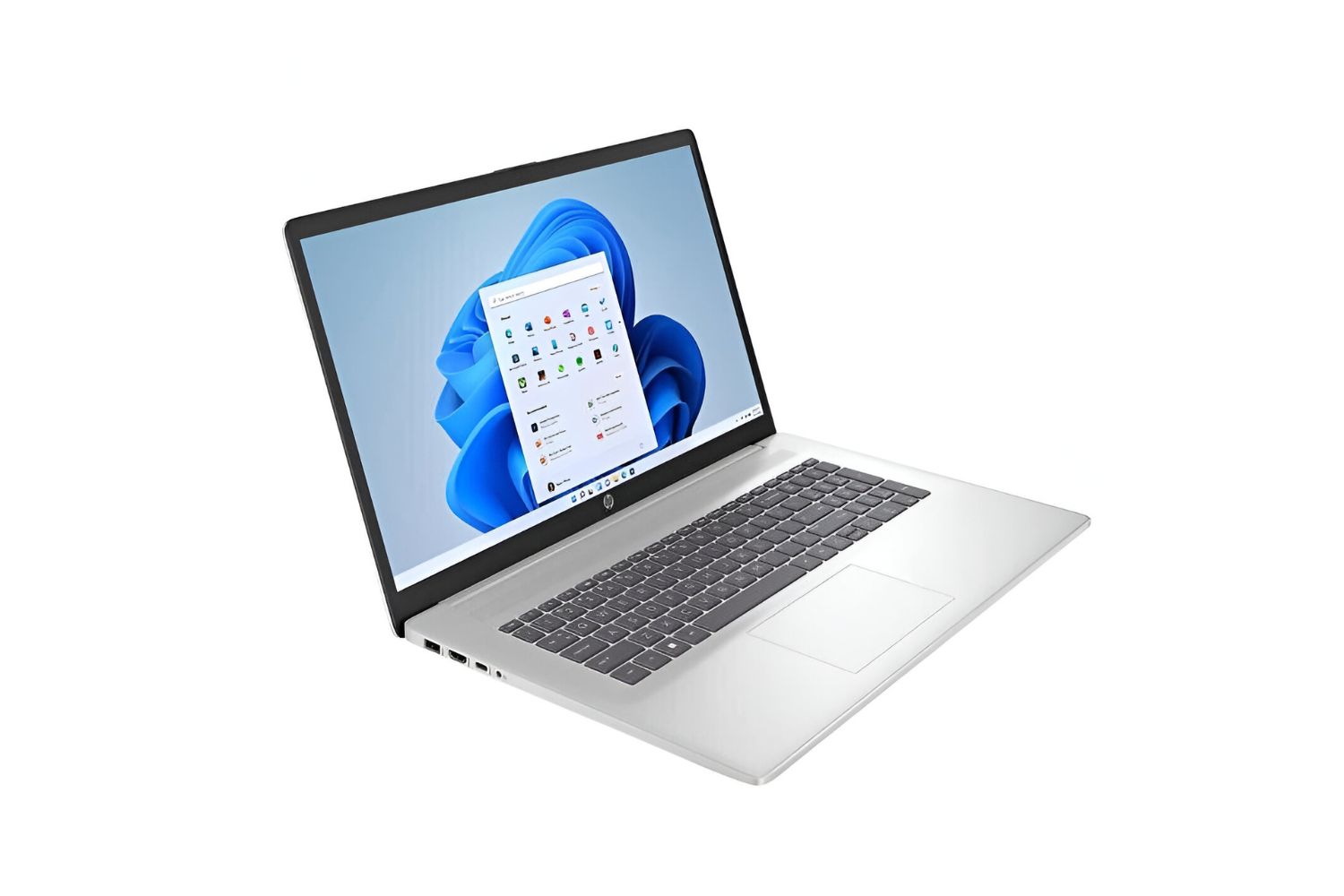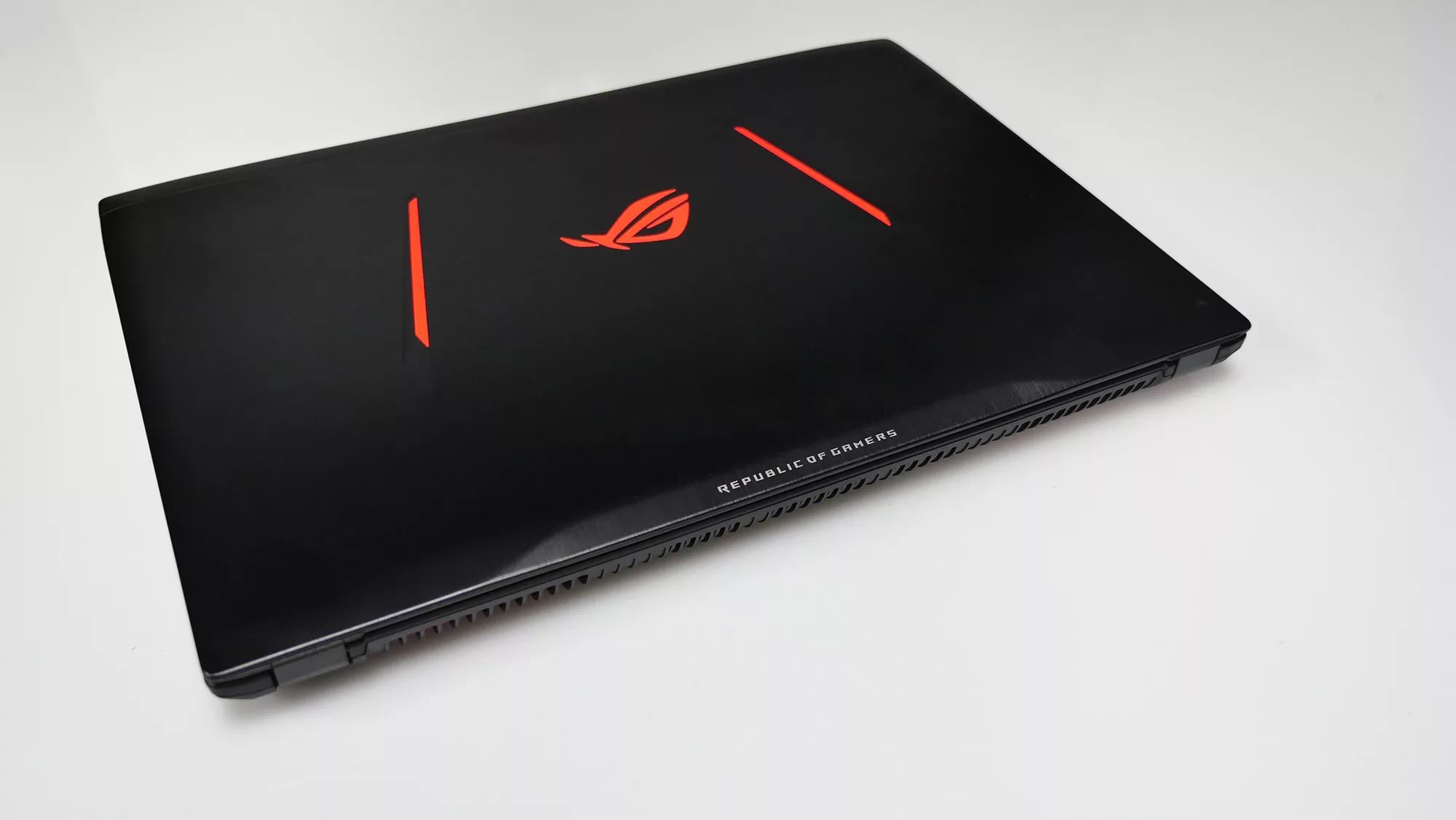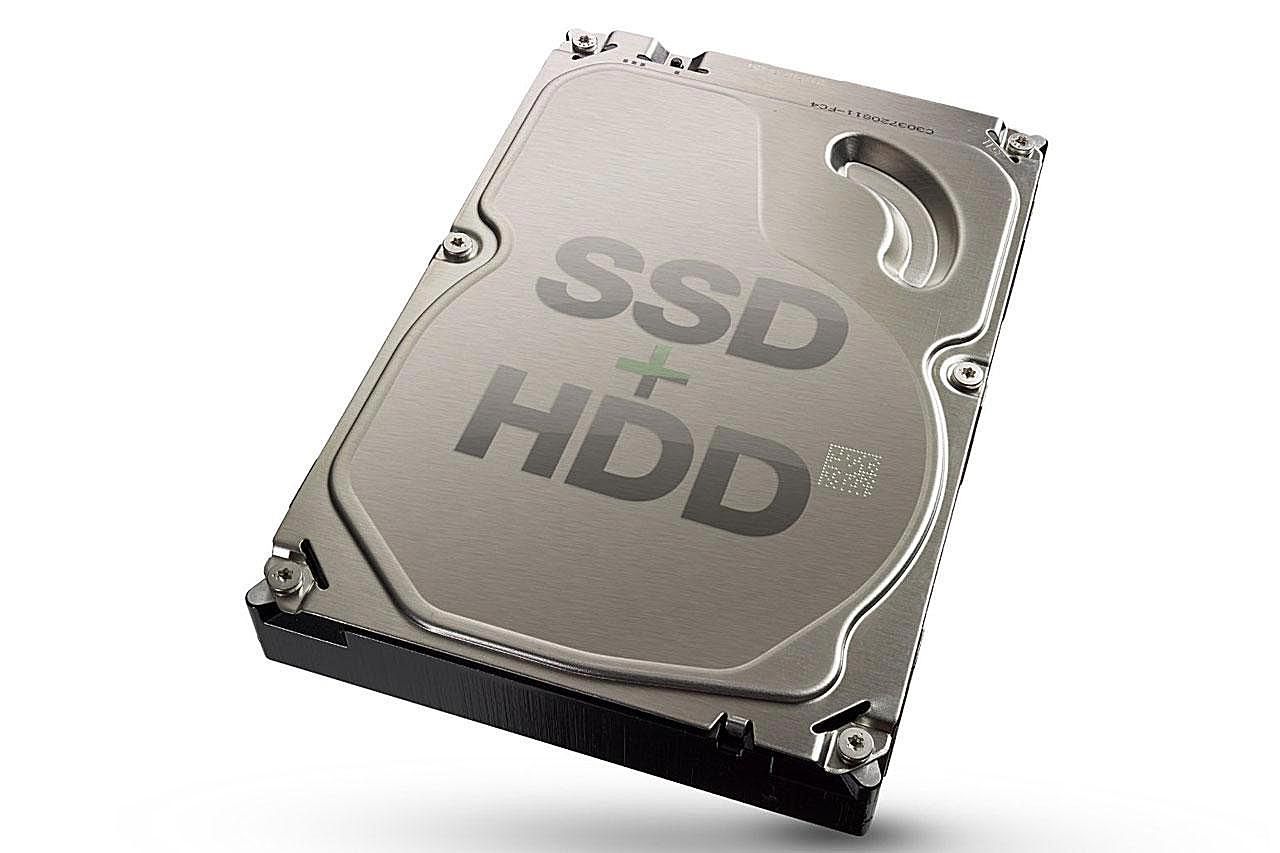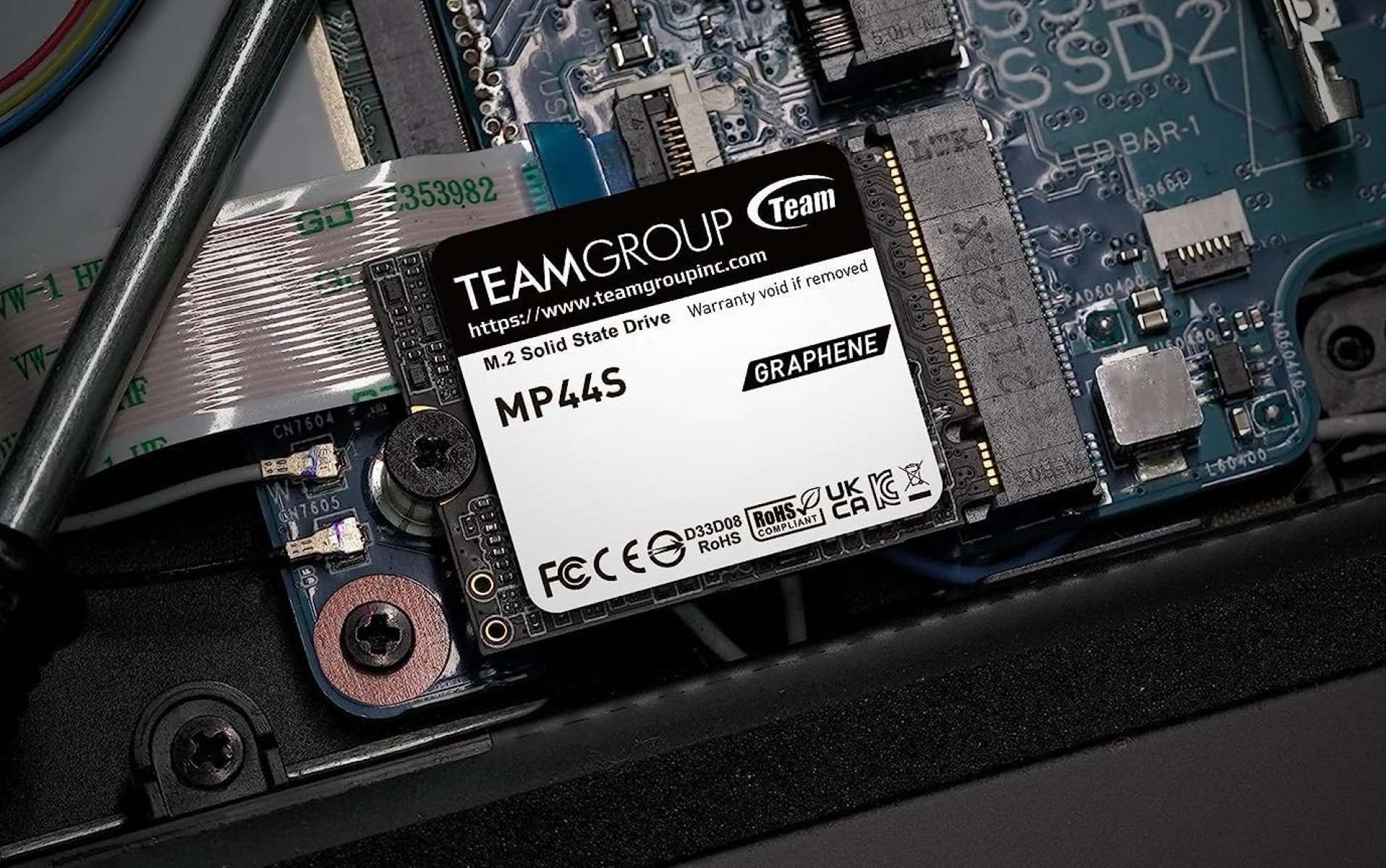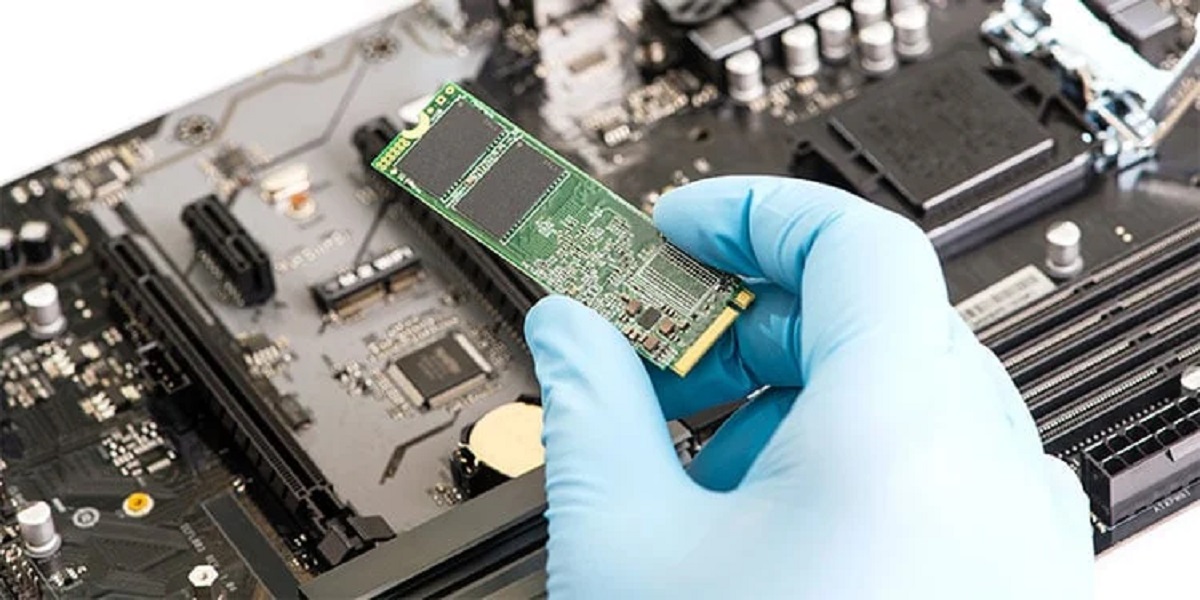Introduction
Welcome to the world of storage devices, where the choice of where to install your programs can have a significant impact on your computer’s performance. With the advent of solid state drives (SSDs) and hybrid hard drives (HHDs), users have more options than ever before.
A solid state drive (SSD) is a type of storage device that uses flash memory technology to store data. It has no moving parts, which makes it faster and more reliable than traditional hard disk drives (HDDs). On the other hand, a hybrid hard drive (HHD) combines the best of both worlds, with a traditional HDD for bulk storage and a smaller amount of solid state storage for faster access.
In this article, we will explore the advantages and limitations of installing programs on both SSDs and HHDs. By understanding the differences between these two types of storage devices, you will be able to make an informed decision on where to install your programs.
What is a Solid State Drive (SSD)?
A solid state drive (SSD) is a storage device that uses flash memory to store data. Unlike traditional hard drives that rely on spinning disks and moving parts, SSDs have no mechanical components. Instead, they use microchips to store and retrieve data. This design makes SSDs faster, more reliable, and more energy-efficient than traditional hard drives.
SSDs come in various form factors, including SATA, M.2, and PCIe. They have a higher price per gigabyte compared to hard drives, but their performance benefits make them worth considering, especially for programs that require fast data access.
One of the key advantages of SSDs is their speed. They offer significantly faster read and write speeds compared to hard drives, reducing program loading times and improving overall system responsiveness. With an SSD, you can expect shorter boot times, faster application launches, and quicker file transfers.
Moreover, SSDs have no moving parts, which means they are more resistant to physical impacts and less prone to failure caused by mechanical wear and tear. This makes them an ideal choice for laptops and portable devices that may experience bumps or shocks. Their non-volatile nature also ensures that data is retained even when the power is turned off.
Additionally, SSDs consume less power than hard drives, resulting in longer battery life for laptops and reduced energy consumption for desktop computers. Their lower power requirements also contribute to less heat generation, which can be beneficial for system cooling and overall system stability.
Advantages of Installing Programs on an SSD
Installing programs on a solid state drive (SSD) offers several advantages that can greatly enhance your computing experience. Let’s take a closer look at some of these benefits:
1. Faster Loading Times: SSDs are known for their lightning-fast read and write speeds. By installing programs on an SSD, you can experience significantly reduced loading times. Applications will launch almost instantly, allowing you to start working or gaming without delay.
2. Improved System Responsiveness: SSDs can greatly accelerate the overall responsiveness of your system. Tasks such as opening files, searching for documents, and navigating through folders will be snappier and more fluid. This can lead to a more efficient and enjoyable computing experience.
3. Enhanced Multitasking: If you frequently work with multiple programs simultaneously, installing them on an SSD can help improve multitasking performance. The faster data access speed allows for smoother transitions between applications and reduces potential lag or stuttering.
4. Quicker File Transfers: Whether you’re copying large files or transferring data between drives, an SSD can greatly expedite the process. The high read and write speeds of an SSD enable faster file transfers, saving you valuable time and increasing productivity.
5. Reduced Boot Times: One of the most noticeable benefits of using an SSD is the significant decrease in boot times. Your computer will start up in a matter of seconds, enabling you to jump right into your work or entertainment without waiting for the operating system to load.
6. Durability and Reliability: SSDs have no moving parts, making them more resistant to physical shocks and vibrations. This inherent durability reduces the risk of data loss due to mechanical failure. Additionally, SSDs have a longer lifespan compared to traditional hard drives, allowing for long-term and reliable storage of your programs.
7. Energy Efficiency: SSDs consume less power than traditional hard drives, which can prolong battery life in laptops and reduce energy consumption in desktop computers. This not only benefits your device’s battery performance but also contributes to a more sustainable and environmentally-friendly computing experience.
Overall, installing programs on an SSD can vastly improve performance, responsiveness, and efficiency in your computing tasks. Its speed, durability, and energy efficiency make the SSD an ideal choice for those who demand quick and reliable access to their programs and files.
Limitations of Installing Programs on an SSD
While there are numerous advantages to installing programs on a solid state drive (SSD), it is important to consider some of the limitations associated with this storage technology. Here are a few factors to keep in mind:
1. Cost per Gigabyte: SSDs are generally more expensive than traditional hard drives on a per-gigabyte basis. This means that acquiring an SSD with a large storage capacity can be cost-prohibitive for some users. If you have a multitude of programs that require significant disk space, it may not be practical to install all of them on an SSD.
2. Limited Lifespan: While the overall lifespan of SSDs has improved over the years, they still have a limited number of write cycles before they start to degrade. This means that constantly performing intensive write operations, such as installing and uninstalling programs frequently, can shorten the usable lifespan of an SSD. However, modern SSDs have wear-leveling algorithms and improved durability, which reduce this limitation to a large extent.
3. Storage Capacity: SSDs often have smaller storage capacities compared to traditional hard drives. If you have a large collection of programs or data that requires a significant amount of disk space, it may be challenging to fit everything on an SSD. In such cases, you may have to prioritize which programs to install on the SSD and which ones to store on a secondary storage device.
4. Limited Write Speed for Large Files: While SSDs excel in read speeds, their write speeds can be slower when dealing with large files compared to traditional hard drives. This limitation can affect tasks that involve constant writing of large files, such as video editing or data processing. However, for the majority of everyday tasks, the write speed of an SSD is more than sufficient.
5. Compatibility and Firmware Updates: SSDs from different manufacturers may have varying levels of compatibility with certain systems or require firmware updates for optimal performance. It is essential to research and choose an SSD that works seamlessly with your particular hardware configuration to ensure proper functionality and avoid potential compatibility issues.
6. Limited Improvement for Certain Applications: While installing programs on an SSD can greatly enhance performance, there are specific types of applications that may not benefit as significantly. For example, programs that are primarily CPU-bound rather than storage-bound may not experience a significant speed increase. Similarly, programs that do not involve heavy disk access, such as simple text editors or web browsers, may not see a noticeable improvement when installed on an SSD.
Despite these limitations, the advantages of SSDs still outweigh the drawbacks for most users. With proper considerations and management, the limitations can be minimized, allowing you to enjoy the significant performance advantages that SSDs bring to your computing experience.
What is a Hybrid Hard Drive (HHD)?
A hybrid hard drive (HHD), also known as a solid state hybrid drive (SSHD), is a storage device that combines the best features of both traditional hard disk drives (HDDs) and solid state drives (SSDs). It offers a balance between capacity and performance by incorporating a traditional hard drive for bulk storage and a smaller amount of solid state storage for faster access.
Unlike pure SSDs, hybrid hard drives utilize a combination of magnetic platters and flash memory technology. The magnetic platters provide large storage capacity, while the flash memory acts as a cache for frequently accessed data to improve performance and responsiveness.
Hybrid hard drives are typically designed with an intelligent controller that automatically moves frequently accessed data to the solid state cache, allowing for faster read and write speeds. This caching mechanism adapts over time, learning your usage patterns and ensuring that the most frequently accessed data is readily available in the flash memory portion of the drive.
These drives come in the standard 3.5-inch or 2.5-inch form factors, making them compatible with most desktop and laptop systems. They connect to the computer via SATA interface, just like traditional hard drives.
The combination of HDD and SSD technologies in a hybrid hard drive brings several advantages. The larger HDD portion provides ample storage for data-intensive applications, such as multimedia files and large software installations. Meanwhile, the smaller SSD cache enhances overall system performance by accelerating the access to frequently used data.
When accessing frequently used applications or files, the hybrid hard drive can deliver performance comparable to that of a full SSD. However, for larger files or less frequently accessed data, the performance will be closer to that of a traditional hard drive.
Hybrid hard drives are an excellent option for users who want the benefits of SSDs without the higher cost associated with large-capacity pure SSDs. They provide a good compromise between speed and storage space, allowing users to leverage the advantages of both technologies.
It’s worth noting that hybrid hard drives are becoming less common in today’s market as pure SSDs have become more affordable. However, they still offer a cost-effective solution for users who require a significant amount of storage space combined with improved performance.
Advantages of Installing Programs on an HHD
While solid state drives (SSDs) have gained popularity for their speed and performance, there are still advantages to installing programs on a hybrid hard drive (HHD). Here are several benefits of utilizing an HHD for program installation:
1. Ample Storage Space: One of the major advantages of an HHD is its large storage capacity. With a hybrid hard drive, you can install a multitude of programs without worrying about running out of space. This makes HHDs ideal for users who work with extensive software collections or multimedia files that demand significant storage capacity.
2. Cost-Effective Solution: Compared to solid state drives, HHDs offer a more budget-friendly option for program installation. Pure SSDs with large storage capacities can be quite expensive. By opting for an HHD, you can strike a balance between cost and performance, enjoying the benefits of SSD caching technology while still having ample storage space at a more affordable price point.
3. Improved Performance for Frequently Accessed Data: Hybrid hard drives utilize a solid state cache to store frequently accessed data. As a result, programs and files that are often used will benefit from faster read and write speeds, comparable to those of a pure SSD. This means that your frequently used applications will launch quickly, enhancing overall system responsiveness.
4. Adaptable Performance: Hybrid hard drives employ intelligent algorithms that adapt over time to your usage patterns. As you continue to use the drive, it learns which data and applications are accessed most frequently and dynamically moves them to the solid state cache. This ensures that the most frequently used data is readily available, providing optimal performance for your frequently accessed programs.
5. Compatibility: Hybrid hard drives are compatible with standard SATA interfaces, making them compatible with most desktop and laptop systems. This means that you can seamlessly integrate an HHD into your existing system without the need for any additional hardware or software configuration.
6. Energy Efficiency: Hybrid hard drives consume less power compared to traditional hard drives, resulting in better energy efficiency for your system. The reduced power consumption not only prolongs laptop battery life but also contributes to a more environmentally-friendly computing experience.
Overall, hybrid hard drives provide a cost-effective solution with ample storage space and improved performance for frequently accessed data. They offer a balance between cost and performance, making them an attractive option for users who require a significant amount of storage for their programs while still benefiting from faster access times for frequently used applications.
Limitations of Installing Programs on an HHD
While hybrid hard drives (HHDs) offer a combination of the benefits of both solid state drives (SSDs) and traditional hard drives, there are some limitations to consider when installing programs on an HHD:
1. Limited SSD Cache Size: HHDs typically have a smaller solid state cache compared to dedicated SSDs. This means that only a portion of frequently accessed data can be stored in the faster cache. As a result, programs and files that are not frequently used may not benefit from the improved performance offered by the SSD cache, resulting in slower access times for less frequently accessed software.
2. Performance Impact with Large Files: When dealing with large files that exceed the capacity of the SSD cache, the performance of an HHD may be similar to that of a traditional hard drive. If you frequently work with large files, such as video editing or database management, the performance boost from the SSD cache may be limited, and you may not experience significant improvements compared to using a dedicated SSD.
3. Hybrid Drive Logic: The performance benefits of an HHD heavily rely on the intelligent caching algorithms within the drive. While these algorithms attempt to predict and move frequently accessed data to the SSD cache, there may be instances where the cache does not contain the data you need, resulting in slower access times. This limitation can be more noticeable during initial usage or when switching between different programs frequently.
4. Limited Lifespan: Similar to SSDs, the solid state portion of an HHD has a limited lifespan due to the nature of flash memory. However, the caching algorithms in HHDs ensure that frequently accessed data is stored on the traditional hard drive as well, reducing the wear on the SSD portion. Nonetheless, it is essential to monitor the health of the SSD cache and be prepared for potential degradation and eventual replacement.
5. Compatibility: While hybrid hard drives are generally compatible with standard SATA interfaces, compatibility issues may arise with certain operating systems or specialized configurations. It is crucial to verify the compatibility of the HHD with your specific system before installation to avoid any potential compatibility-related issues.
6. Boot Time Improvement: While hybrid hard drives can offer improved boot times compared to traditional hard drives, they may not match the lightning-fast boot times of dedicated SSDs. If you prioritize quick system start-ups, a dedicated SSD may still be a better option.
7. Limited Availability: As the market continues to shift towards pure SSDs, the availability and selection of hybrid hard drives may be more limited compared to traditional hard drives or dedicated SSDs. This limitation may impact options for different storage capacities and may require more extensive research to find the right HHD for your specific needs.
Considering the limitations above, it is crucial to assess your specific requirements and usage patterns when deciding whether to install programs on an HHD. While they offer a balance between cost and performance, an HHD may not always be the optimal choice for users who require faster access to all their programs and may benefit more from a dedicated SSD solution.
Factors to Consider When Choosing Between SSD and HHD for Program Installation
When deciding between a solid state drive (SSD) and a hybrid hard drive (HHD) for program installation, several factors should be taken into account. Consider the following aspects to make an informed decision:
1. Performance Requirements: Evaluate your specific performance needs. If you prioritize faster program loading times, improved system responsiveness, and quicker file transfers, then an SSD may be the better choice. On the other hand, if you require a balance between cost and performance, with ample storage space and some performance enhancements for frequently accessed data, an HHD can offer a more cost-effective solution.
2. Budget: Consider your budgetary constraints. SSDs generally have a higher price per gigabyte compared to HHDs. If you have a limited budget and need a large storage capacity, an HHD may be the more affordable option. However, if you can allocate a higher budget for optimal performance and are willing to sacrifice storage space, an SSD may be the right choice.
3. Storage Space Requirements: Assess your storage needs. SSDs are available in smaller capacities compared to traditional hard drives, whereas HHDs can offer larger storage capacities. If you have multiple programs or large files that require ample storage space, an HHD may be more suitable. However, if you primarily work with smaller programs and have limited storage demands, an SSD could be a better fit despite the higher cost per gigabyte.
4. Frequency of Program Installation/Uninstallation: Determine how often you install or uninstall programs. If you frequently install and uninstall software, which involves frequent write operations, an SSD may be more suitable due to its faster write speeds and improved durability. Conversely, if you have a stable set of programs that don’t require frequent changes, an HHD can provide sufficient performance while maximizing storage capacity.
5. Power Efficiency: Consider power efficiency if you use a laptop or prioritize energy consumption. SSDs generally consume less power than traditional hard drives, resulting in improved battery life for laptops and reduced energy consumption for desktops. If energy efficiency is a priority, an SSD may be the better choice.
6. Future Expandability: Anticipate future needs for storage expansion. If you foresee the need for increased storage capacity in the future, an HHD may be more suitable since they generally offer larger storage options. However, if you prefer the option to add additional SSDs in the future or if you have the flexibility to rely on cloud storage solutions, an SSD can provide faster performance and scalability.
7. System Compatibility: Ensure compatibility with your system. Both SSDs and HHDs connect via standard SATA interfaces, making them generally compatible with most desktop and laptop systems. However, check your system’s specifications and ensure that the drive you choose is compatible with the interface and connector type of your computer.
By carefully considering these factors, you can select the storage solution that best suits your specific needs, balancing performance, budget, storage requirements, and future expandability. Whether you opt for the speed and reliability of an SSD or the cost-effective performance of an HHD, making an informed decision will result in an improved program installation experience and enhance overall system performance.
Conclusion
Choosing between a solid state drive (SSD) and a hybrid hard drive (HHD) for program installation depends on several factors. If you prioritize speed, improved system responsiveness, and quicker file transfers, an SSD is the ideal choice. With its faster read and write speeds, an SSD can significantly enhance your computing experience. However, SSDs tend to have a higher price per gigabyte and limited storage capacities.
On the other hand, if you need a balance between cost and performance, with ample storage space and some performance improvements for frequently accessed data, an HHD is worth considering. HHDs combine the benefits of traditional hard drives and SSDs, providing a cost-effective solution with larger storage capacities.
Consider your specific requirements, such as performance needs, budget, storage space requirements, frequency of program installation/uninstallation, power efficiency, future expandability, and system compatibility. By evaluating these factors, you can make an informed decision that aligns with your needs and preferences.
Both SSDs and HHDs have their advantages and limitations. SSDs offer faster speeds, increased durability, and low power consumption, while HHDs provide ample storage space and a cost-effective solution. Ultimately, the choice between SSD and HHD depends on your priorities and budget.
It’s important to note that the technology landscape is constantly evolving. SSD prices continue to drop, and storage capacities are increasing. This trend is making SSDs more affordable and accessible, challenging the dominance of HHDs. As technology advances, SSDs are likely to become the preferred choice for program installation, offering both performance and capacity.
Whichever option you choose, both SSDs and HHDs offer advantages over traditional hard drives. They can significantly improve program loading times, system responsiveness, and overall user experience. Assess your specific needs, evaluate the factors discussed, and make an informed decision that suits your requirements and budget.







